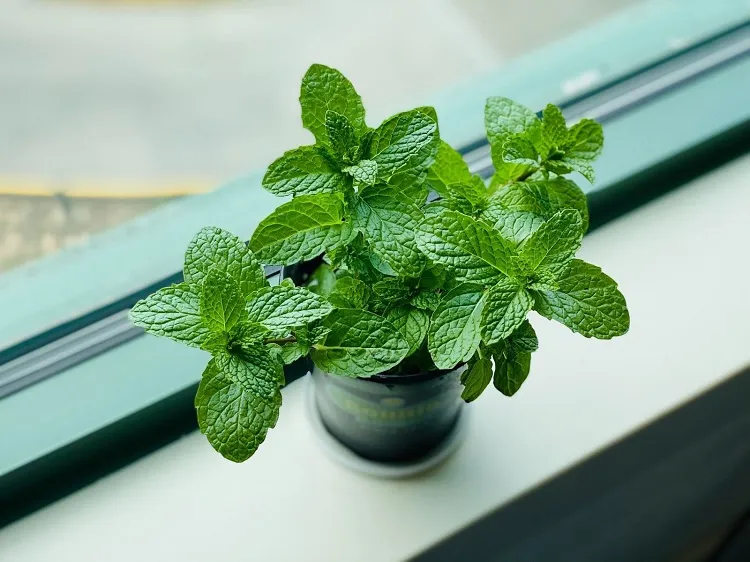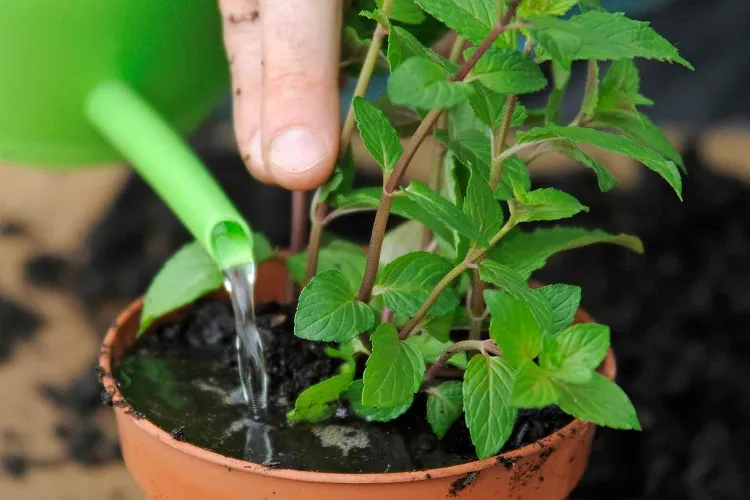Growing mint in pots is a fantastic way to enjoy this aromatic herb, even if you have limited space in your kitchen or yard. By providing the right care, you can cultivate a flourishing plant in a container that adds fascinating fresh flavor and fine fragrance to your culinary creations. What you should know about the needs of this plant to grow it successfully? How to water, fertilize and with which herbs to escape planting it?
Does Mint Grow Well in Pots?
Mint, with its refreshing aroma and varied culinary uses, is a favorite herb for gardeners and household owners. Whether you have a small green area or just would like to keep this wonderful herb within arm’s reach, growing mint in pots can be a rewarding effort. But does it feel good in pots? It is proved that the plant is well-fit for gardening in pots, and with the right care, you can delight a long-lasting harvest of this scented herb near you from the kitchen windowsill or yard.
Growing Mint in Pots Indoors from Cuttings
Growing mint from cuttings is a fast and efficient approach to reproduce this herb indoors. Start by choosing a sound, well-developed plant. Cut a 4-6 in (10-15 cm) stem just under a node (where leaves and branches pop out). Then cut out the lower leaves to set out the nodes. Soak the cutting in a glass of water, and be sure that the nodes are submerged, while the leaves stay above water. After that, keep the glass in a bright, but not direct sun-lit spot, and pour new water every 4–5 days. When you saw that roots have reached 2 in (5 cm) longevity, it’s time to move the cutting into a container with well-drained soil. Choose one that is at least 6-8 in (15-20 cm) deep and with drainage gaps. Fill the container with a mixture of potting soil and compost, making a nourishing environment for the cutting to develop its roots. So, plant the young mint, water it entirely, and find a spot for the pot with ample sunlight.
Read also: Growing Mint from Seed Indoors: Learn the Tricks of Developing the Herb Fast at Home
How Do You Care for a Potted Mint Plant?
When growing mint in pots, you should pay attention to a few important factors for its fast development:
- Indirect, bright light: Mint thrives in sunlight, but it should not be direct, yet bright enough. When you’re growing it at home, you should find a place for your pot next to a south-looking window where your plant may have at least 4–6 hours of light every day. In case, you’re growing it in the garden, be sure that it is sun-lit in the morning and shaded after 13 o’clock, not to allow the summer heat to scorch its leaves.
- Frequent watering: Selecting a pot with good holes and a well-draining soil mixture is the proper solution for the plant. The herb likes a consistent damp in the soil, though not waterlogged. Water it when the top layer of soil seems dried out. Be careful not to pour much of the liquid, to escape from root rotting.
- Pruning the tips: Doing it from time to time is important for your plant to be bushy, and preventing it from becoming leggy. Cut off the tips of the stems to push the branching process and the thick growth. In addition to this, when you pick leaves regularly, the result is increasing the new growth and promoting the plant’s vitality.

- Rare fertilization: This is a comparatively low-maintenance herb, but if you decide to add some nutrients, this promotes its growth. Feed your mint in a container with a balanced water-soluble nutrition all the growing season in spring and summer, once on every 4–6 weeks.
- Pest defense: Mint is normally resistant to pests infestation, but aphids, spider mites, and whiteflies can sometimes infest it. Keep an eye out for any signs of such an illness, and if this happens, utilize organic pest control methods like neem oil or insecticidal soap.
What Not to Plant with Mint?
Mint is a fascinating and useful addition to your garden or kitchen, but you should know that it’s famous for its active growth and trend to spread fast. So, having in mind its invasive habit, it’s best to avoid planting mint directly in the ground, but in containers. Nevertheless, sometimes it’s possible to plant the herb with other plants, and it’s good to know what are the herbs that should not be allowed to be next to mint to prevent intervention. This plant can be aggressive and may crowd out other herbs, so it’s best not to grow it together with herbs that have comparable growing habits like basil, oregano and thyme.
Read also: DIY Indoor Herb Garden: Grow Aromatic Additions for Your Dishes at Your Fingertips





